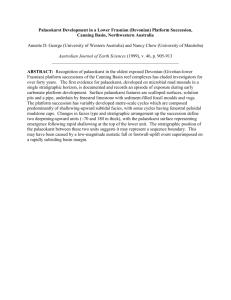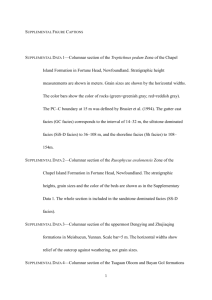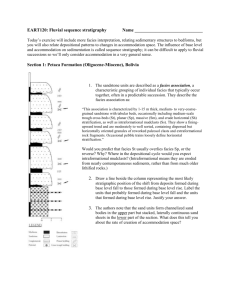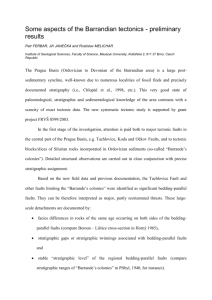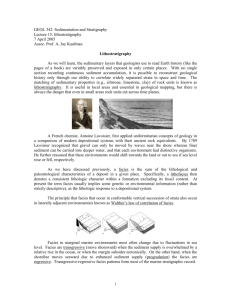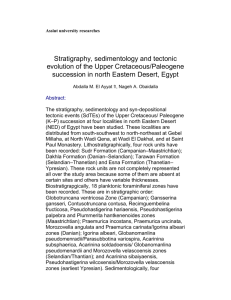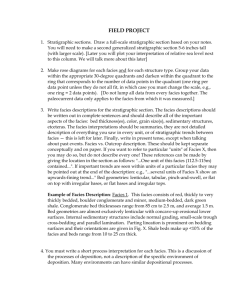Early Pennsylvanian, coal-bearing, siliciclastic strata of the Breathitt
advertisement
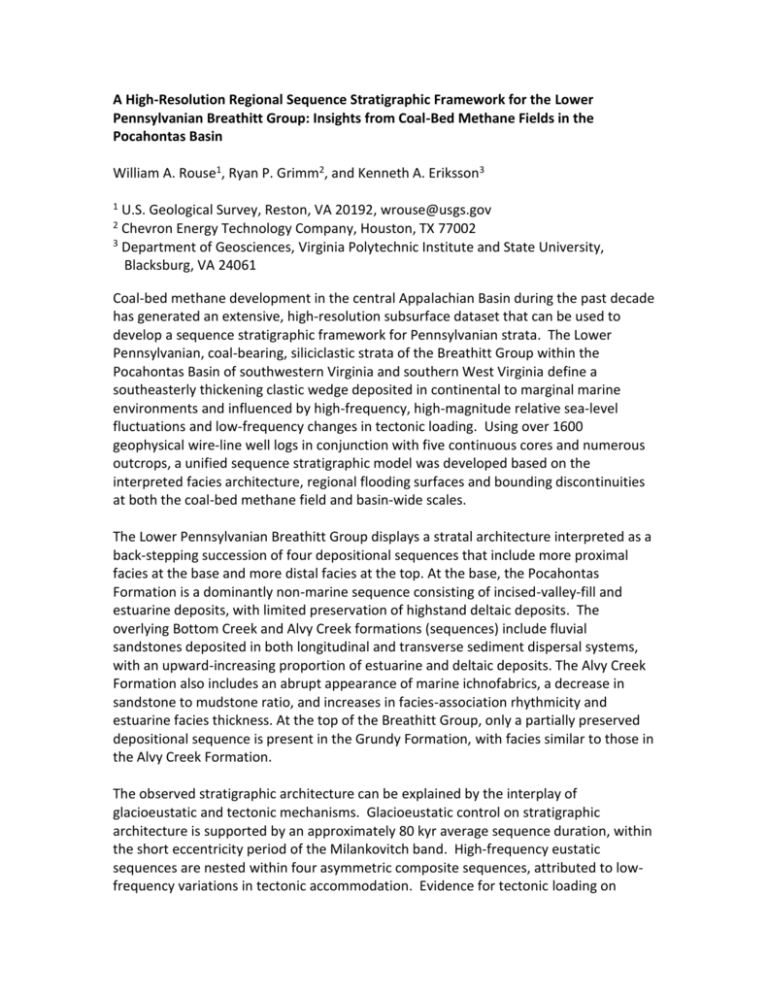
A High-Resolution Regional Sequence Stratigraphic Framework for the Lower Pennsylvanian Breathitt Group: Insights from Coal-Bed Methane Fields in the Pocahontas Basin William A. Rouse1, Ryan P. Grimm2, and Kenneth A. Eriksson3 1 U.S. Geological Survey, Reston, VA 20192, wrouse@usgs.gov Chevron Energy Technology Company, Houston, TX 77002 3 Department of Geosciences, Virginia Polytechnic Institute and State University, Blacksburg, VA 24061 2 Coal-bed methane development in the central Appalachian Basin during the past decade has generated an extensive, high-resolution subsurface dataset that can be used to develop a sequence stratigraphic framework for Pennsylvanian strata. The Lower Pennsylvanian, coal-bearing, siliciclastic strata of the Breathitt Group within the Pocahontas Basin of southwestern Virginia and southern West Virginia define a southeasterly thickening clastic wedge deposited in continental to marginal marine environments and influenced by high-frequency, high-magnitude relative sea-level fluctuations and low-frequency changes in tectonic loading. Using over 1600 geophysical wire-line well logs in conjunction with five continuous cores and numerous outcrops, a unified sequence stratigraphic model was developed based on the interpreted facies architecture, regional flooding surfaces and bounding discontinuities at both the coal-bed methane field and basin-wide scales. The Lower Pennsylvanian Breathitt Group displays a stratal architecture interpreted as a back-stepping succession of four depositional sequences that include more proximal facies at the base and more distal facies at the top. At the base, the Pocahontas Formation is a dominantly non-marine sequence consisting of incised-valley-fill and estuarine deposits, with limited preservation of highstand deltaic deposits. The overlying Bottom Creek and Alvy Creek formations (sequences) include fluvial sandstones deposited in both longitudinal and transverse sediment dispersal systems, with an upward-increasing proportion of estuarine and deltaic deposits. The Alvy Creek Formation also includes an abrupt appearance of marine ichnofabrics, a decrease in sandstone to mudstone ratio, and increases in facies-association rhythmicity and estuarine facies thickness. At the top of the Breathitt Group, only a partially preserved depositional sequence is present in the Grundy Formation, with facies similar to those in the Alvy Creek Formation. The observed stratigraphic architecture can be explained by the interplay of glacioeustatic and tectonic mechanisms. Glacioeustatic control on stratigraphic architecture is supported by an approximately 80 kyr average sequence duration, within the short eccentricity period of the Milankovitch band. High-frequency eustatic sequences are nested within four asymmetric composite sequences, attributed to lowfrequency variations in tectonic accommodation. Evidence for tectonic loading on foreland basin accommodation is based on abrupt shifts in sandstone facies composition, angular stratal terminations and wedge-shaped composite sequence geometries.

